Tributes to Loved Ones
When you visit a cemetery, you will find trinkets and tributes at many of the gravestones, placed there in loving memory of the lost. You’ll see bouquets, small pieces of jewelry, or sometimes a simple collection of stones.
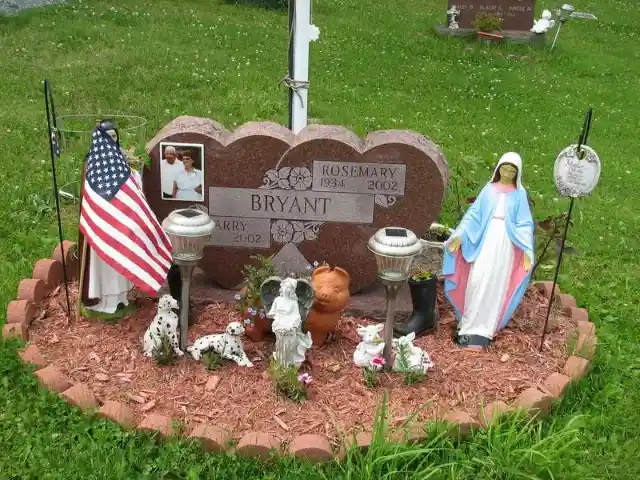
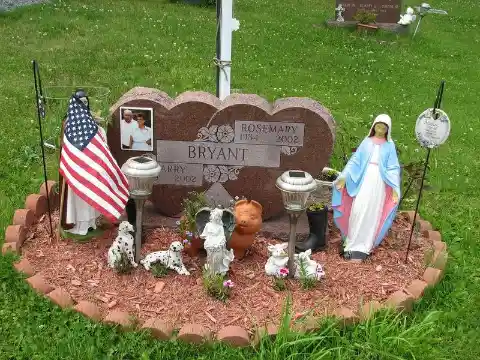
Sometimes, instead of flowers or stones, you might find a few glittering coins placed atop a gravestone. It may seem like a strange tribute, as the dead have no use for money, but their reason for being there is quite poignant.
Coins On Stones
If you take a closer look at the stones with coins on them, you’re likely to find coins of different financial values. It could look as though someone just emptied their pockets while remembering their loved one.
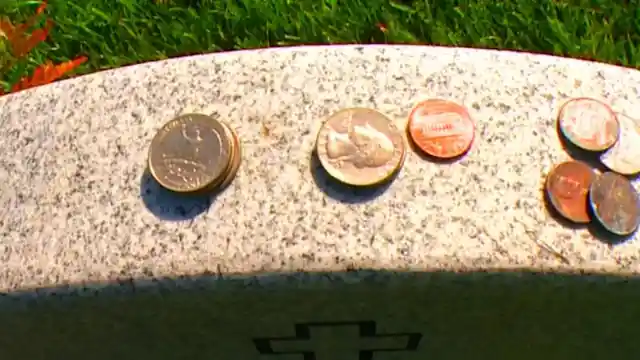
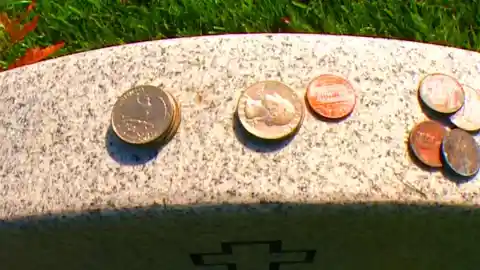
The assortment is far from random, though. The different coins have specific meanings to those that leave them on the stones. Once you learn a little more about this tradition, you’ll never look at a dime the same again.
More Mementos
Of course, coins are not the only things you’ll find placed next to or on top of the tombstones at a graveyard. You’re likely to find an assortment of different tributes at the cemetery, many of which may appear as random decorations.
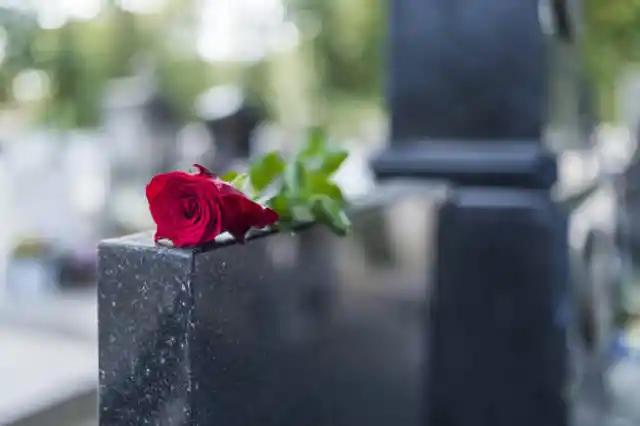
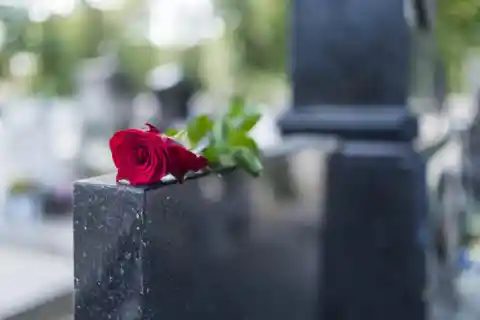
They all have meaning, though, but what exactly could that meaning be? We’ll start with the most common memento: flowers. Bouquets are one of the most beautiful ways to honor the dead, but what started this practice?
An Ancient Tradition
The tradition of placing flowers next to a tombstone dates back to the ancient Greeks, who would use blossoms to honor their fallen soldiers. There was a custom called ‘zoai’, where flowers were planted around a plot.
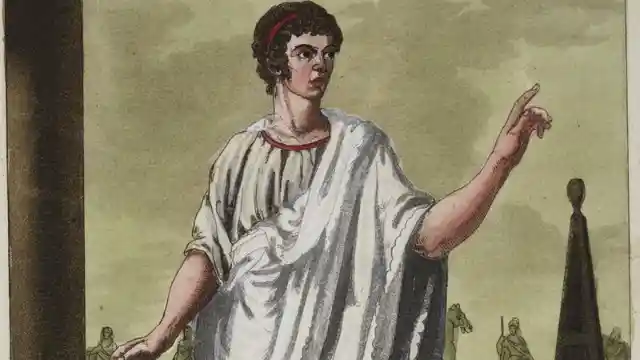
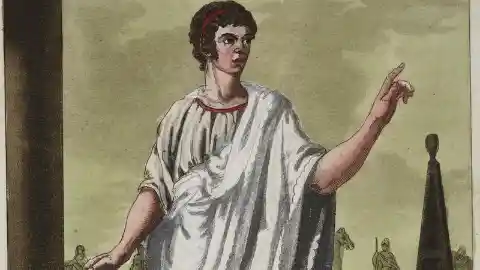
Mourners would then keep watch over the flowers as a sign of respect. If the flowers bloomed around the burial site, it was believed that the dead’s spirit had found contentment in the afterlife.
“Et Tu, Romani?”
The ancient Romans also adopted the tradition, though with a different meaning. Rather than using the flowers as a spiritual symbol, ancient Romans saw them as gifts that were given to their lost loved ones.
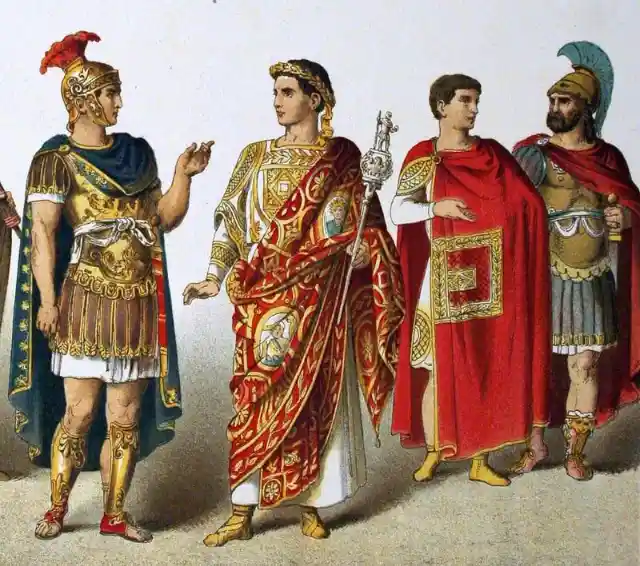
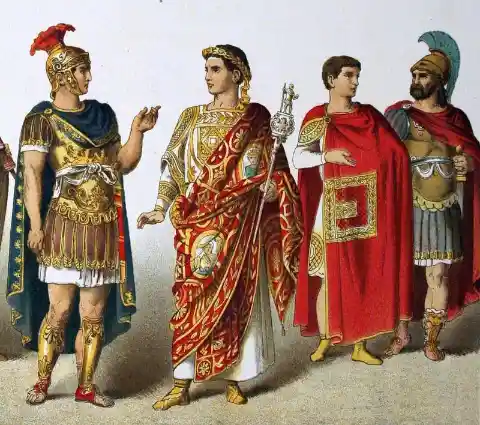
They believed that human souls lingered near their buried bodies in the afterlife. Thus, flowers and other tributes were left, though the flowers may also have been used to mask the aroma of rotting flesh.
Different Flowers, Different Meanings
Similar to coins placed at gravestones, different flowers are associated with different meanings and messages. Most people are mindful about what flowers they decide to place at a grave when they visit.
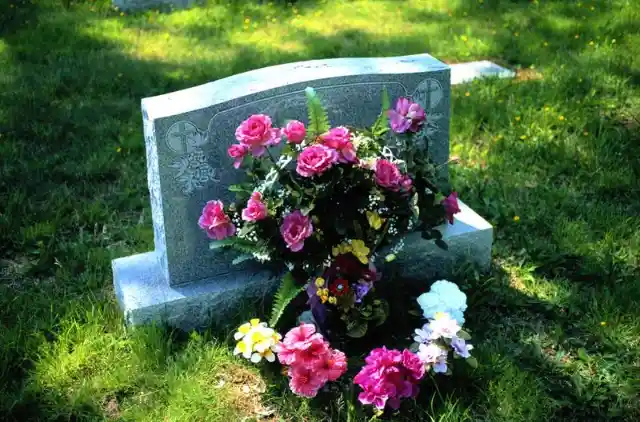
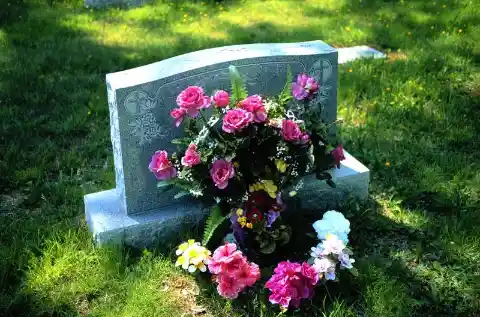
For instance, camellia flowers are meant to represent affection for the deceased, as do red roses and carnations. Daffodils are meant to convey hope and rebirth, which makes sense since they bloom in the spring.
The U.S. Took Its Time
Though the custom of placing flowers at graves has been around for quite some time, it didn’t appear in America until after the Civil War had concluded. That’s far closer to the present than the ancient Greeks and Romans.
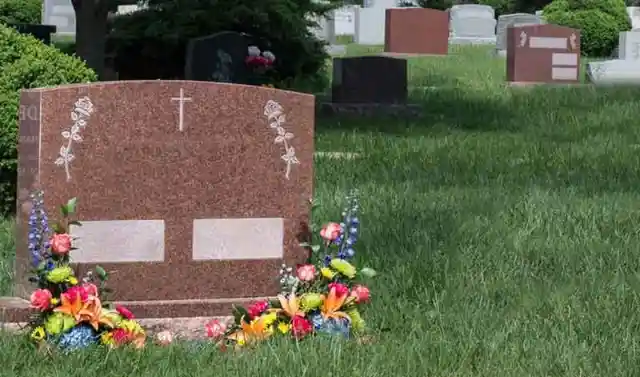
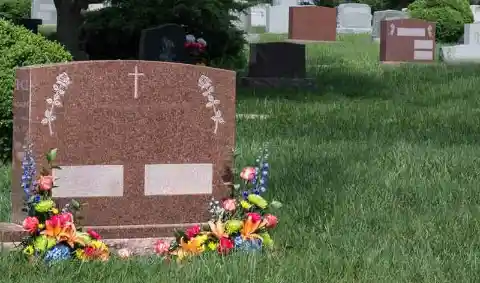
Americans were searching for a way to express their grief, and countless citizens turned to bouquets. Anything that was in bloom at the time was used to decorate graves, and the tradition was born in the country.
Not Just Flowers
You won’t just find flowers decorating gravestones. You might find some pebbles on the tombstones, as well, and like the flowers, there is a deeper meaning to their placement beyond mere decoration.
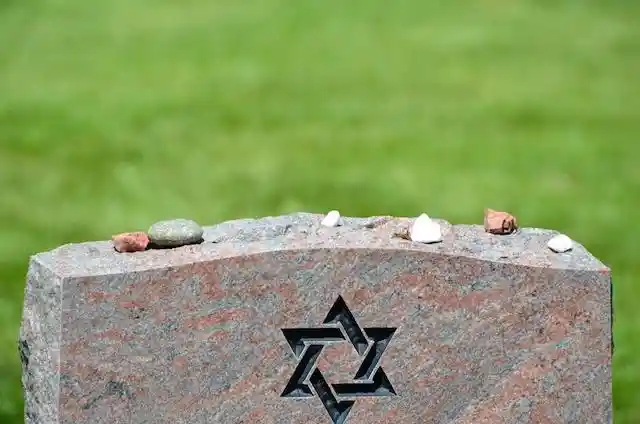
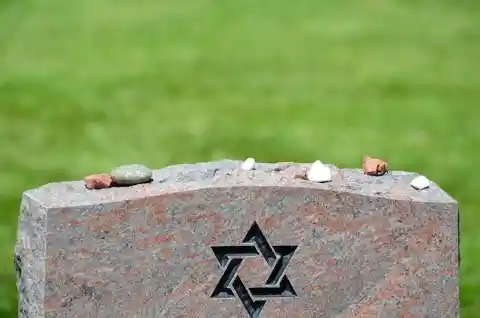
The practice of placing stones at graves also began in the ancient era. Stones were used to shield corpses from roaming animals and also served as premature tombstones, signifying where someone had been buried.
Why Stones?
Why are stones still being laid at tombstones? In essence, some people want to uphold the tradition that their ancestors used to honor the dead. Each pebble left at a stone is meant to represent one person that visited.
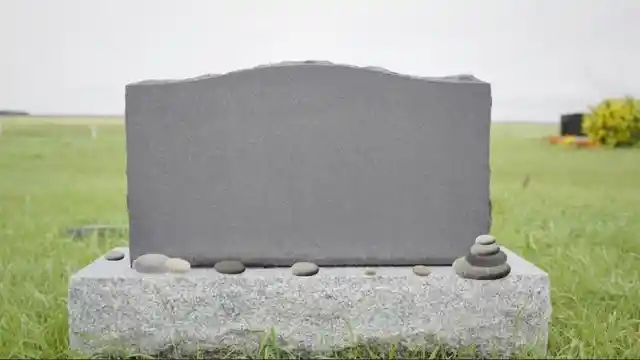
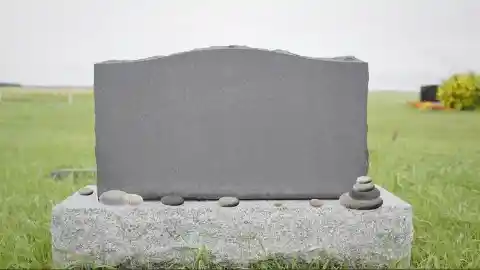
That explains why many tombstones are decorated with several stones. Even in the afterlife, they are still popular. By now, you’re probably asking yourself - where does all this stuff go? Great question.
Cleaning Up
Cemetery custodians often clear away the pebbles after some time, though they’re never actually thrown away. Instead, the pebbles are placed on the ground near the plots they were laid at.
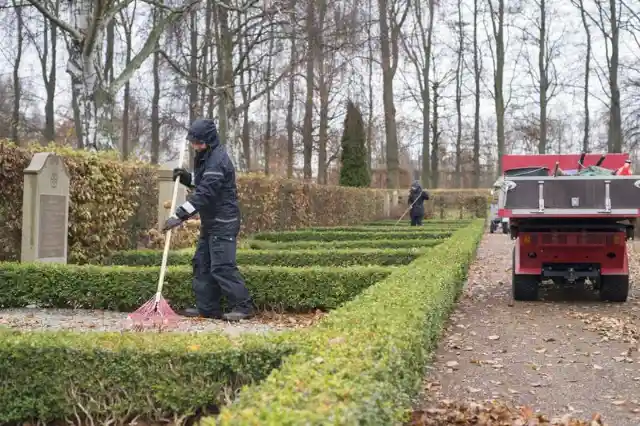
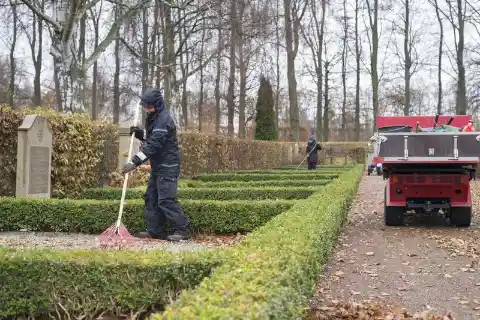
Of course, flowers start to wither away after some time, which can not be prevented. When this happens, custodians must dispose of them. However, if you plant flowers at a grave, you can look after them.
What Happens To The Coins?
Unless you have been told otherwise, you should never touch the coins at a cemetery. Those dimes and quarters are important both to the person that placed them at the tombstone and the deceased buried below.
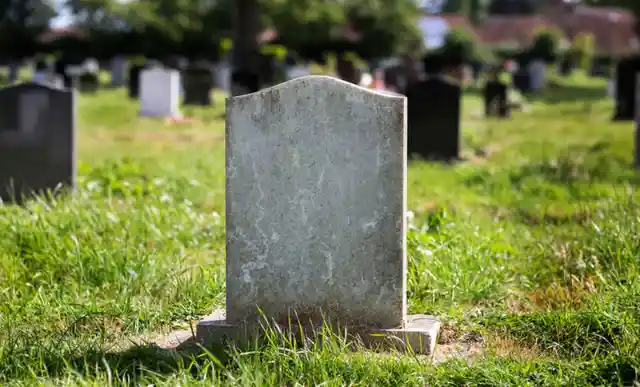
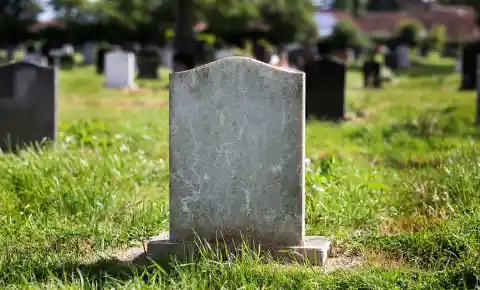
The coins are generally put on tombstones of those who were part of the U.S. military, and they are used to commemorate a fallen soldier’s life. As we already mentioned, the different denominations hold different meanings.
Grave Blankets
With a name like ‘grave blankets’, we wouldn’t be surprised if you thought we were suggesting you lay a quilt over your loved one’s grave. However, grave blankets are actually evergreen arrangements woven into a natural blanket.
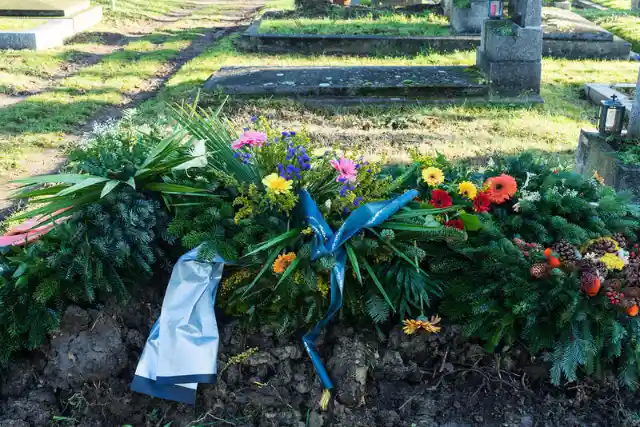
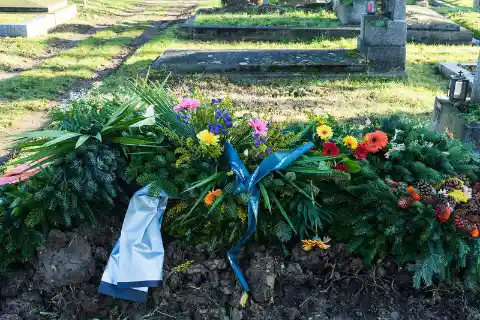
They can be laid out over a grave, and are generally placed at gravesites before the first snow. They are a symbolic gesture used to tuck your loved one in and keep them warm, even when they’re no longer with you.
Pictures
As the saying goes, a picture is worth a thousand words. Now and then, you may find a picture at a gravestone when you visit the cemetery, and the image will generally tell you a lot about its significance.
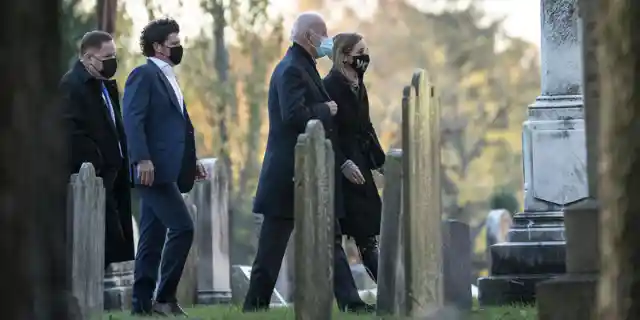
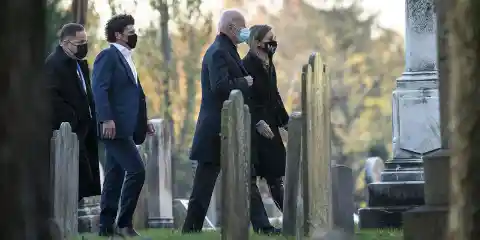
Many people like to put pictures on the gravestones of their lost loved ones, usually as a reminder of special days or happy moments. They’re a nice way to bring back good memories every time you visit the tombstone.
Notes
Sometimes, something as simple as a handwritten note can be the most sentimental item in the world. You might find a note or two placed at a tombstone, sometimes only a few sentences long.
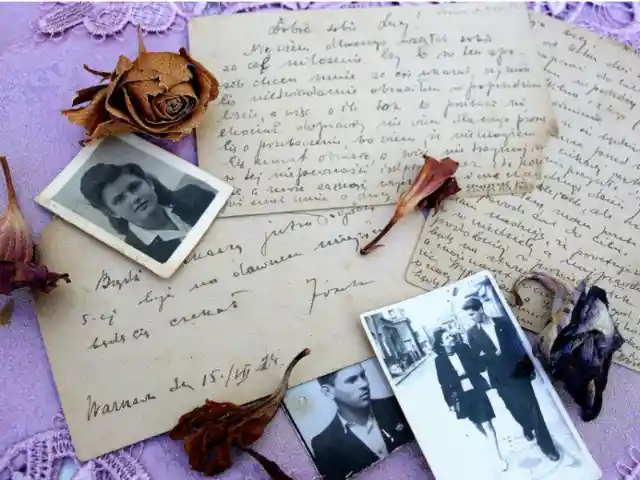
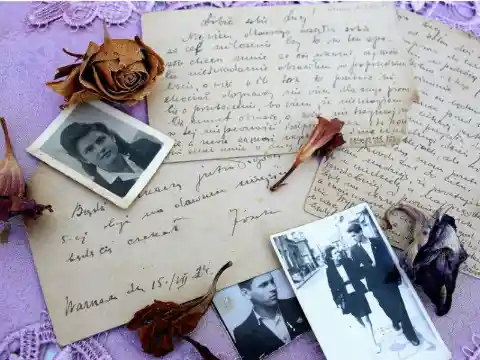
Written notes can allow the living to say the final words to their lost loved ones that they never got to say, which can be a powerful step in the grieving process. If you spot a note, try not to tamper with it.
Wind Chimes
For those who don’t know, wind chimes are a kind of percussive instrument that is made from suspended tubes or rods that are either wood or metal. When the wind blows through them, the tubes bump into each other and make a pleasant chiming noise.
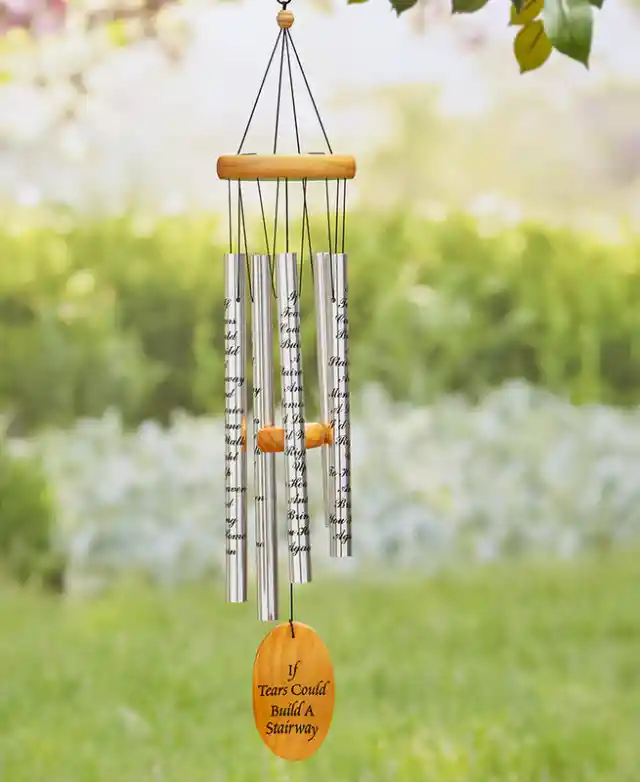
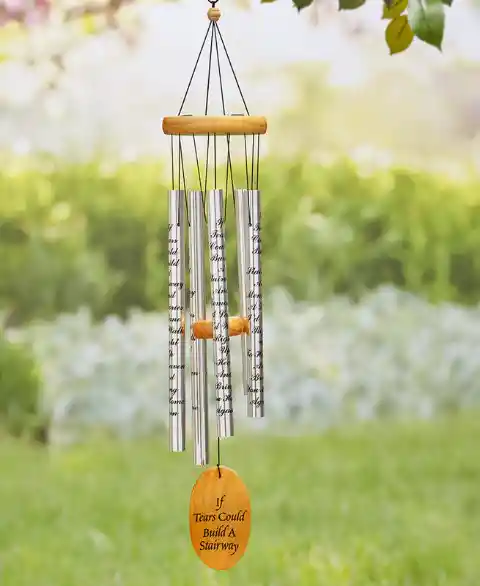
Some people choose to leave wind chimes at their loved ones' graves. It adds a unique personal touch to the grave, and every time they chime, the living can remember their lost loved ones.
Religious Symbols
Religion often plays a big role in death for many people, so it’s not uncommon for the living to leave religious symbols and items of significance at the graves of their deceased loved ones.
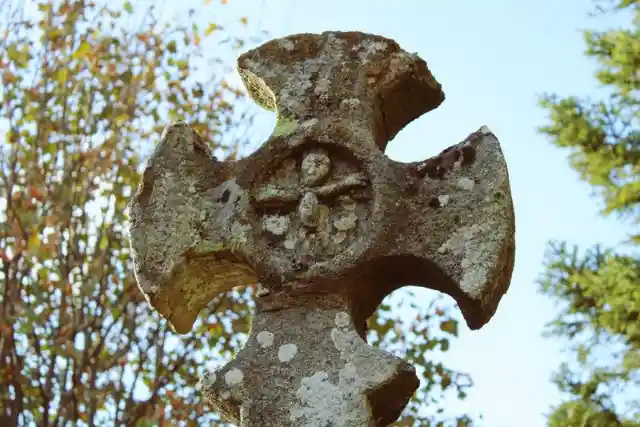
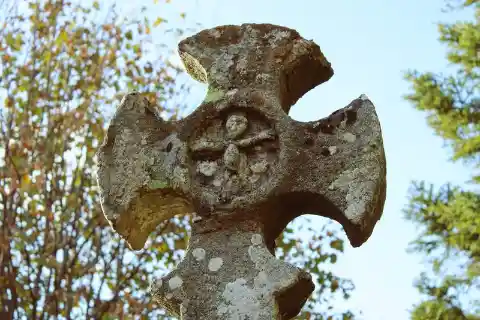
You’ll often find religious objects placed next to graves. Not only do these help the living stay true to their faith, but it is also significant in that they are keeping their loved one in their faith, as well.
The Monetary Meanings
Pennies are said to represent someone outside of the military who came to pay respects to the soldier. As the monetary value of the coin increases, the meanings become more and more personal.
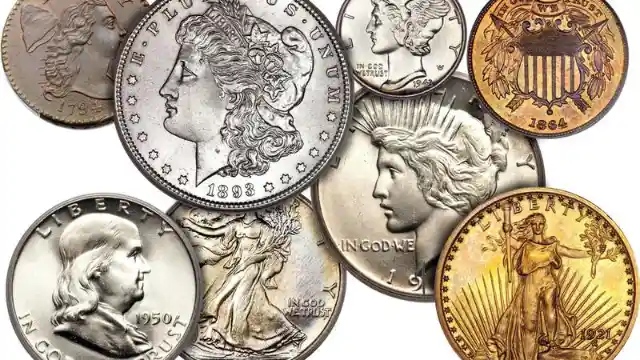
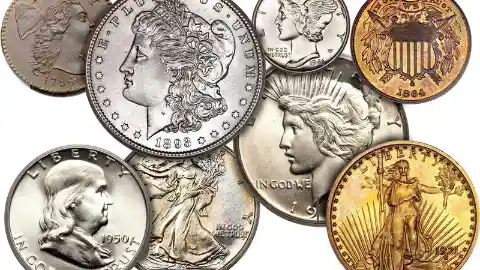
For example, if a nickel is left on a tombstone, the person that put it there went to boot camp with the deceased. A dime tightens the connection further, indicating that the person was in the same regiment. Quarters, however, have an extra-special meaning.
The Significance Of Quarters
If a quarter is placed at a tombstone, the person who put it there was with the soldier when they died. It’s often quite emotional for a relative to find a quarter at the grave.
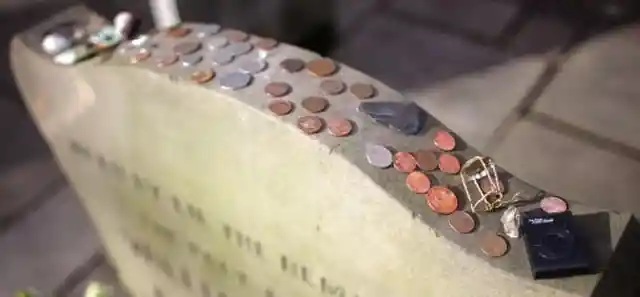

Now that you know why coins are placed at graves, you might be wondering how the tradition started. Let’s take a look and find out.
No One Knows For Certain
The truth is, we aren’t sure about the origin of this tradition, though there is one popular theory. It states that the custom started in the United States during the time of the Vietnam War, in which 58,000 American soldiers died.
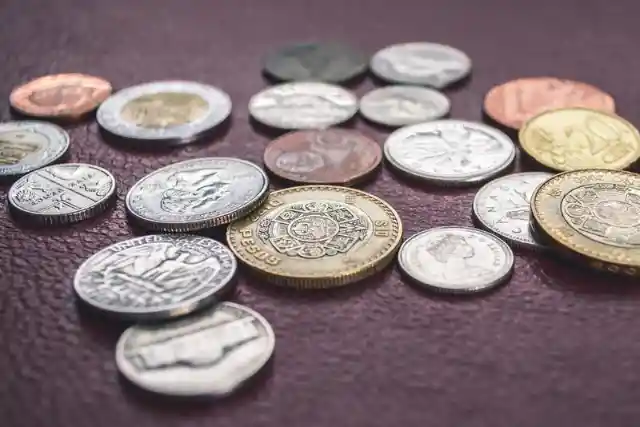
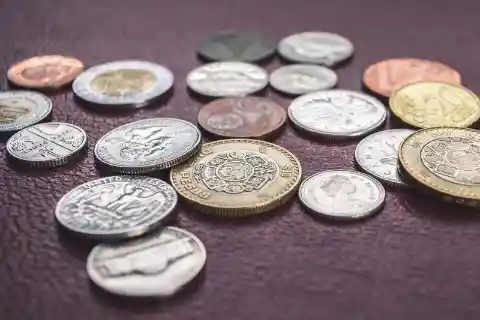
As you may know, that war incited many protests in the 1960s and 1970s. The conflict was largely unpopular, even amongst those who fought in it. Thus, talking about a fallen friend wasn’t very popular, either.
Double Significance
Not only was placing a coin a meaningful way to remember the dead, but it also eliminated the potential of getting into an argument about the Vietnam War. However, that wasn’t the only reason that the coins cropped up.
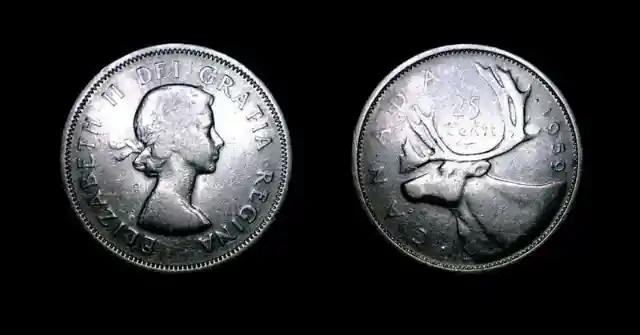
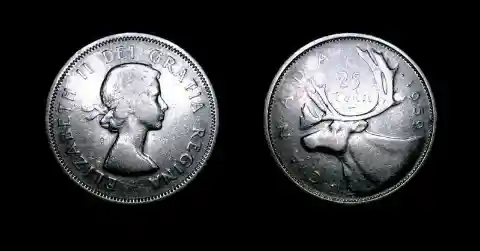
The money was also said to be a way for the dead to buy drinks for their friends once they had also passed on - in other words, when they were reunited in the afterlife. Still, the connection between coins and graves wasn’t just because of Vietnam.
Coins & The Romans
Ancient Roman soldiers were honored similarly when they died in battle. The practice also hasn’t been reserved only for fallen soldiers. Some families have wanted to place coins at tombstones perhaps because of Greek mythology.
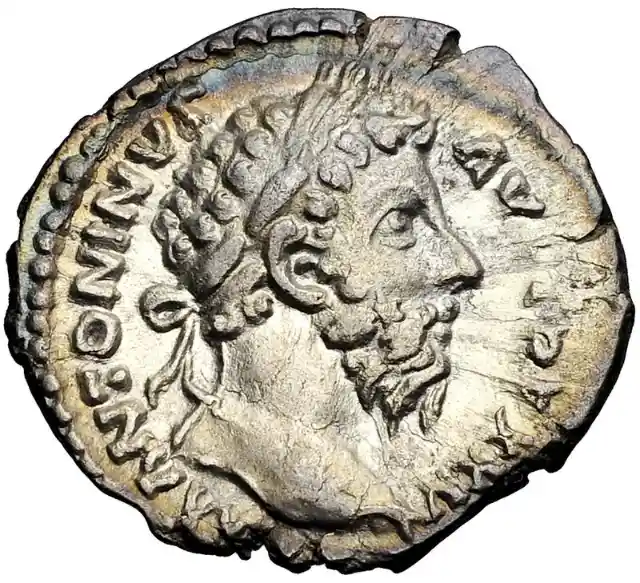
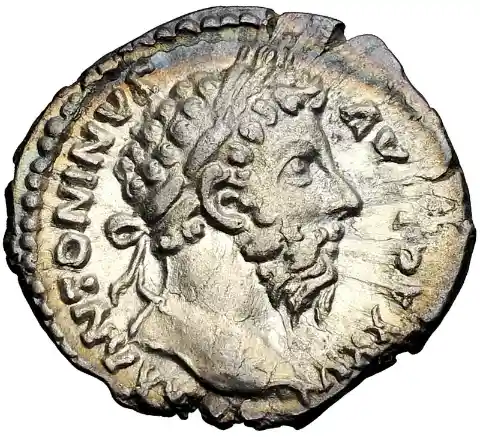
Ancient Greeks believed that the god of the underworld, Hades, had a boatman called Charon, whose job was to transport the souls of the dead to the underworld. In the tables, he traveled the River Styx to get there.
Not A Free Journey
However, the journey came at a price. Charon wanted coins from the deceased to allow them to travel with him, and in the ancient days, coins either had to be placed over the eyes of the deceased or in their mouth.


Without the money, the boatman would deny the soul passage, and they would be left on the treacherous River Styx for one hundred years. That is not a fun way to start the afterlife, wouldn't you agree?
The Black Donnellys
A family with the nickname ‘the Black Donnellys’ also helped make the practice more popular. The clan lived in Canada after leaving Ireland in the 1800s, and five of them were murdered in 1880.
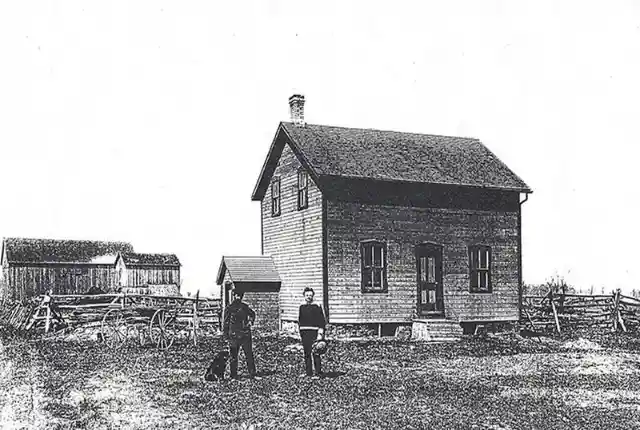
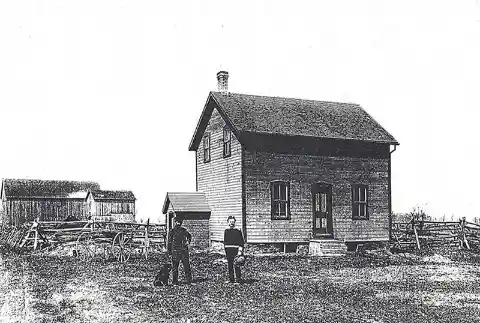
After their burial, it was said that people should drop a coin on their plot and make a wish, and it would eventually come true. Others believed the same would happen with their own relatives.
Memorial Day
While the reason for the coin custom has changed over time, you will still see coins on headstones, with many of them being placed there for one specific national occasion: Memorial Day.
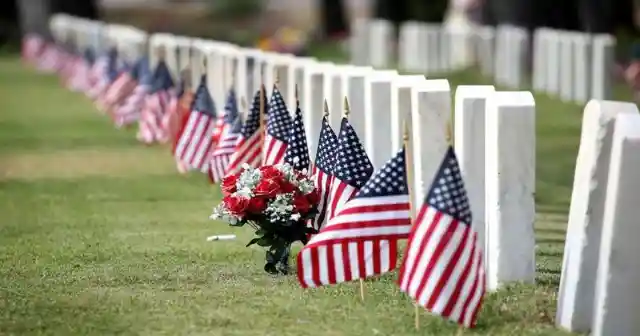
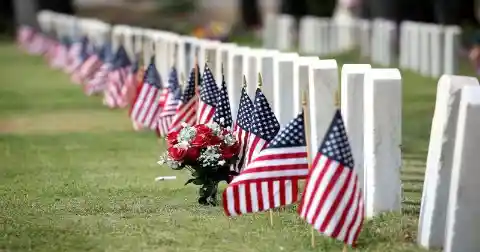
On this day, many people pay respects to the dead by adding coins to their plots. Over time, these coins are gathered by cemetery custodians to fund maintenance.
Non-Military Families
For non-military mourners, coins on the grave can still be used to honor the dead. This is a way for them to pay respects and offer good luck to the deceased. If you find some coins on a grave, they might not be military-related.
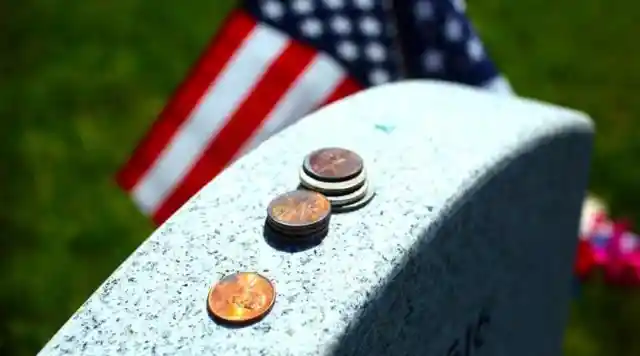
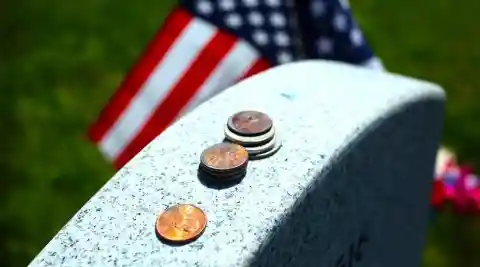
As we mentioned previously, the meaning behind the tradition has changed over time. For some, the coins are a sign of respect for the military, while for others, they bring good luck to the deceased.
Benjamin Franklin
Franklin may be to blame for the reason coins are considered good luck for the deceased. He famously said, “A penny saved is a penny earned.” Thanks to this anecdote, visitors to his grave in Pennsylvania toss pennies on his grave.
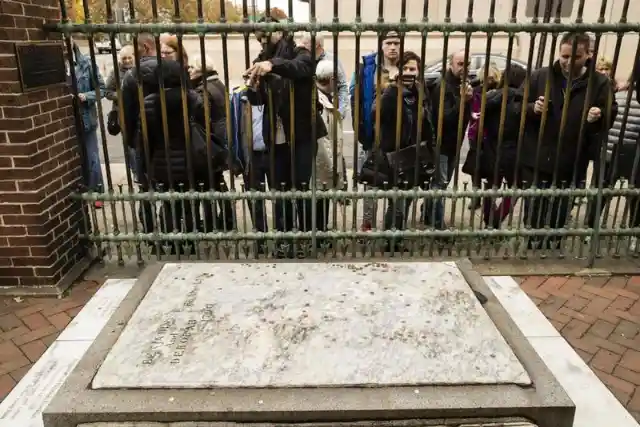
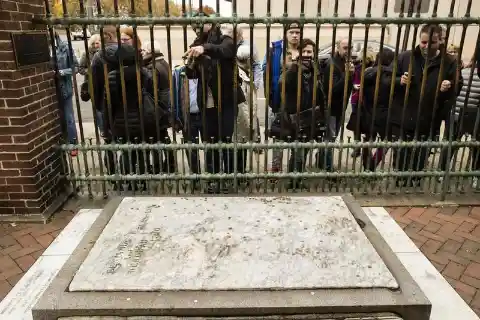
Today, the stone itself is highly damaged due to centuries of coin tossing. While his grave is being repaired, many have taken on the tradition of coin tossing to their loved ones’ graves for good luck.
A Practical Solution
For many other countries, coins are a practical solution to paying respects. Leaving a coin on a grave costs less than buying pricey flowers. In Latin America, Asia, Europe, and beyond, food and trinkets are also popular.
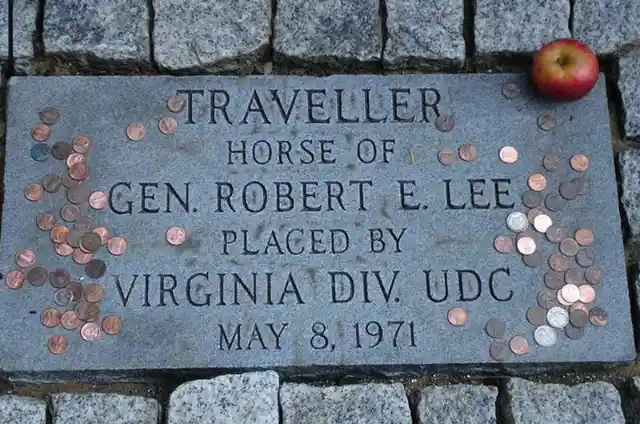
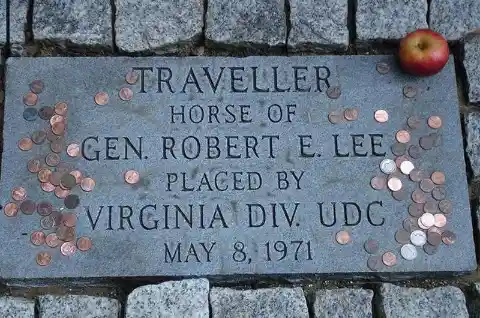
These days, many people leave coins as a sign of respect. They let the world know that the dead are still in the thoughts of the family. Plus, they last longer than flowers.
Solitude And Contemplation
After losing someone you love, you will feel a lot of emotions. Sometimes, the best thing you can do is sit quietly and take some time to yourself to think or pray if you follow a certain faith.
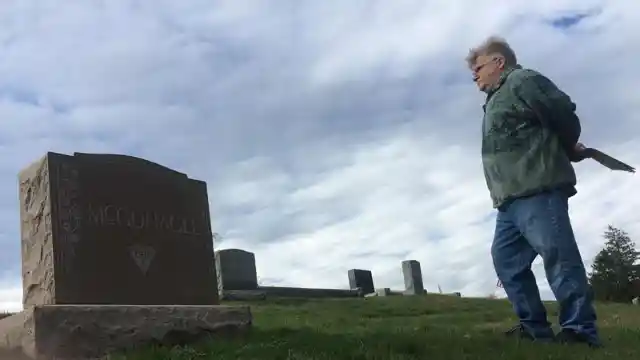
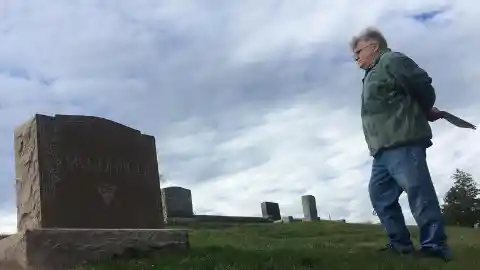
Visiting the grave of your lost loved one can allow you to spend some alone time with them and reflect on the life they lived. You can remember your happiest memories with them and take some time to cry.
A Comforting Tradition
For many people, visiting a grave is a comforting tradition. You can build up a routine of visiting the grave at certain times or on certain days, which allows you to spend time talking with your lost loved one.
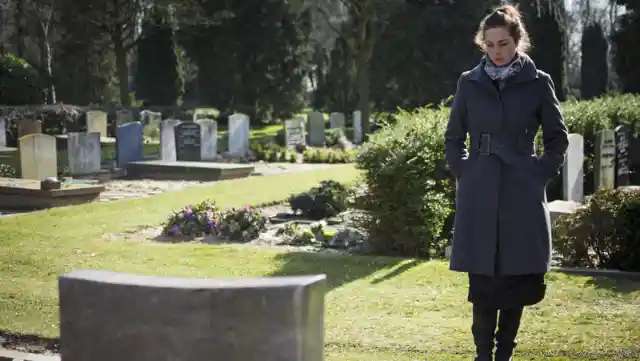
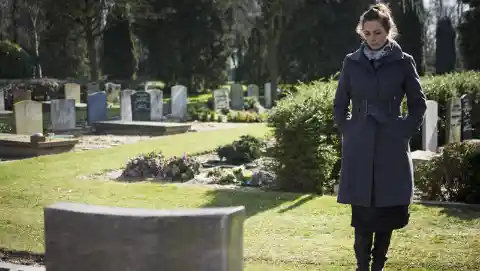
This tradition helps us realize that our loved ones are never truly gone, and as cliche as it sounds, they will always live on in our hearts.
A Place Of Connection
Being able to visit the final resting place of your lost loved one lets you feel more connected with them. Knowing that you are where they are brings a sense of closeness that you may have thought you lost.
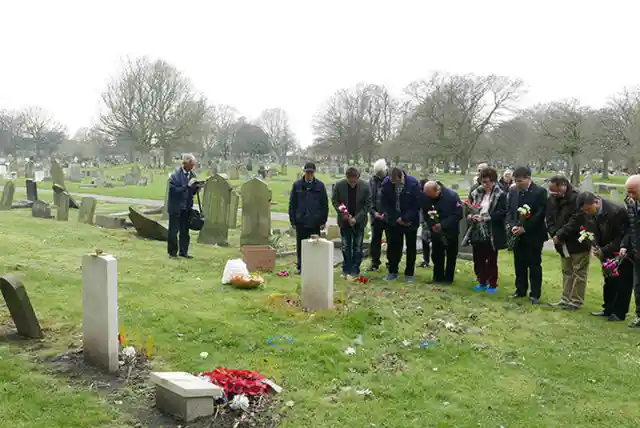
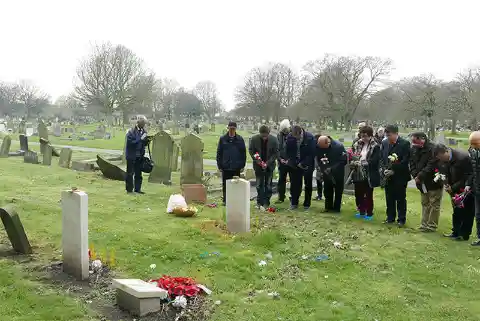
Graves can also allow you to connect with your living loved ones, as you can all gather at the tombstone to remember the one you lost.